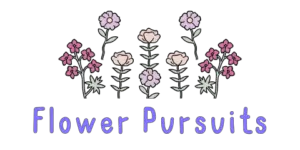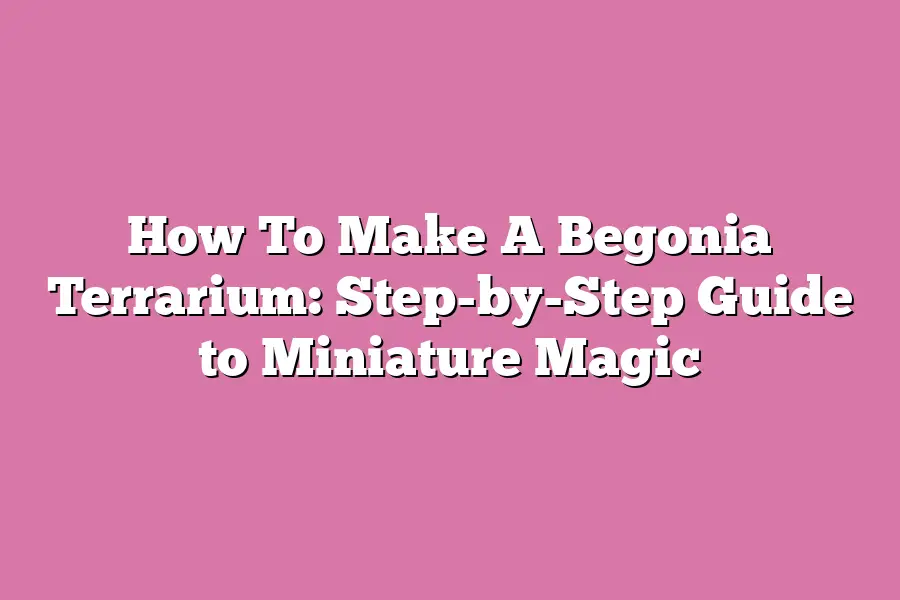Begonias are perfect for creating a lush and low-maintenance terrarium. To start, choose a clear glass or plastic container that is at least 6-8 inches deep. Add a layer of small rocks or pebbles at the bottom, followed by a layer of activated charcoal to help control moisture. Then, add your begonia plant, along with some small decorative stones and mosses to create a visually appealing display.
As I sit surrounded by the lush greens of my Begonia terrarium, I’m reminded of the power of miniature magic.
With just a few simple steps and some carefully curated materials, you can create your own stunning indoor garden that brings joy and serenity to any space.
As an avid plant enthusiast, I’ve always been fascinated by the art of terrarium-making – the way it allows us to control the environment, nurture life, and reap the rewards of beauty and harmony.
In this guide, I’ll walk you through my step-by-step approach to crafting a Begonia terrarium that’s not only visually striking but also low-maintenance and thriving.
So, let’s get started on our journey into the world of miniature magic!
Table of Contents
Gathering Materials for Your Miniature Begonia Masterpiece
As a seasoned terrarium enthusiast, I’m thrilled to share my step-by-step guide on how to create a stunning Begonia terrarium.
But before we dive into the nitty-gritty, let’s start with the essentials – gathering materials that will bring your miniature masterpiece to life!
Choosing the Perfect Container
You can’t build a dream without a solid foundation (or in this case, a clear glass or plastic container!).
I like to think of my terrariums as tiny, self-sufficient ecosystems.
And what better way to create harmony than with a vessel that’s both functional and visually appealing?
Look for containers with wide mouths for easy planting and maintenance – you don’t want any unnecessary obstacles in your creative process!
Vintage jars or modern mini-greenhouses work beautifully, but feel free to get creative and repurpose an old vase or jar.
The key is to find something that resonates with your personal style.
Selecting the Star of the Show: Begonia Varieties
Now it’s time to bring in the main event – a diverse cast of Begonia characters!
You can think of these lovelies as the visual interest department, providing a kaleidoscope of shapes and colors to mesmerize your visitors (or in this case, your plants!).
From the elegant, rounded leaves of Begonia semperflorens to the striking, elongated foliage of Begonia x hybrida, there’s a Begonia species out there to captivate your imagination.
Mix and match different varieties to create a unique, layered look that’ll make your terrarium stand out from the crowd.
Adding Decorative Touches: Rocks, Pebbles, and More!
Time to get creative with some decorative elements!
You can think of these as the finishing touches on your miniature masterpiece – the icing on the cake (or in this case, the decorative rocks on the soil!).
Add a layer of small stones or pebbles for drainage and aesthetic appeal.
This not only prevents waterlogged soil but also creates a visually appealing contrast between the smooth glass and textured stone.
You can also use activated charcoal (optional) to absorb excess moisture and prevent root rot – think of it as a natural, eco-friendly insurance policy for your plants!
There you have it – the essential materials needed to create your very own Begonia terrarium!
With these building blocks in place, you’re ready to start constructing your miniature masterpiece.
In our next section, we’ll dive into the nitty-gritty of planting and maintenance.
Stay tuned!
Planting the Terrarium: Where the Magic Begins
When it comes to creating a Begonia terrarium, the foundation is key.
You can’t just throw some dirt and plants together like a messy gardener; no way!
You need to lay the groundwork for success, and that starts with planting the terrarium.
Step 1: Drainage Station – Small Rocks or Pebbles
Before you even think about adding soil or plants, it’s essential to create a layer of small rocks or pebbles at the bottom of your container.
This may seem like a tiny detail, but trust me, it makes a big difference.
Why?
Well, for starters, it provides drainage.
You don’t want waterlogged soil in your terrarium, as this can lead to root rot and a whole host of other problems.
By adding a layer of small rocks or pebbles, you’re allowing excess water to drain away, keeping the soil healthy and happy.
Step 2: The Soil Situation – Potting Mix and Begonias
Now that your container has a solid foundation, it’s time to add some much-needed soil.
Start with a thin layer of potting mix, just enough to cover the bottom of your container.
Then, carefully place your Begonia plant in the soil, leaving enough space between plants for growth and air circulation.
This is crucial, folks!
You want your plants to have room to breathe and stretch out their roots without getting crowded or competing with each other.
Step 3: Building Up – Layers of Potting Mix, Decorative Rocks, and Begonias
This is where the magic happens!
Continue adding layers of potting mix, decorative rocks, and Begonias until your container is almost full.
Remember to leave a small amount of space at the top for any loose plants or debris that might accumulate over time.
As you add each layer, gently firm it down with your fingers to prevent settling or shifting.
Step 4: The Finishing Touches – Activated Charcoal and Potting Mix
The final step is to add a small amount of potting mix on top to secure any loose plants and add a layer of activated charcoal (if using).
This might seem like an unnecessary extra step, but hear me out!
Activated charcoal can help absorb excess moisture, reducing the risk of mold or mildew growth.
Plus, it adds a touch of elegance to your terrarium, don’t you think?
There you have it – the foundation of your Begonia terrarium is laid!
With these simple steps, you’re well on your way to creating a miniature masterpiece that will bring joy and serenity to your space.
In my next section, we’ll explore some creative ways to customize and embellish your terrarium…
but for now, let’s just bask in the beauty of our handiwork!
Final Touches: Bringing Your Begonia Terrarium to Life
Now that we’ve set up our begonia terrarium and added all the essential elements, it’s time to bring it to life.
You know what they say: “The devil is in the details.” And I’m about to share some crucial final touches that’ll ensure your miniature masterpiece thrives.
Watering Wisdom
Watering can be a tricky business, especially when you’re working with a miniaturized ecosystem like our begonia terrarium.
The goal is to keep the soil consistently moist but not soggy.
To achieve this, simply water your terrarium gently but thoroughly, making sure to check the moisture level by sticking your finger into the soil.
It should feel damp, not drippy or dry.
Think of it like a spa day for your begonias – they need hydration, but not an all-out soak.
You don’t want to risk overwatering and causing root rot or other problems that can harm your plants.
By doing this, you’ll be creating the perfect environment for them to grow and flourish.
Lighting Up
Now that we’ve got our terrariums well-watered, it’s time to talk lighting.
Begonias love indirect sunlight, so find a spot that gets a decent amount of natural light but isn’t directly in the sun’s path.
If you’re placing your terrarium under grow lights, make sure they’re not too intense – begonias prefer gentle, diffused light.
This is where patience comes in handy.
It might take some trial and error to find the perfect spot or lighting setup for your begonias.
But trust me, it’ll be worth it when you see those gorgeous leaves and flowers start to emerge.
Humidity Heaven
Last but not least, let’s talk humidity.
Begonias thrive in environments with high humidity levels – we’re talking 50-70% relative humidity here.
To maintain this level of humidity, simply mist your terrarium with water 1-2 times a week, depending on the environmental conditions.
Think of it like giving your begonias a mini-vacation from the dry air outside.
This will help keep their leaves and stems strong and healthy, allowing them to photosynthesize more efficiently.
By following these final touches, you’ll be creating an ideal environment for your begonias to grow and flourish in their miniature terrariums.
It’s time to sit back, relax, and enjoy the fruits of your labor – or should I say, the leaves?
Final Thoughts
As I step back from my newly created Begonia terrarium, I’m struck by the miniature magic that lies before me.
The delicate petals of the Begonias seem to dance in the soft glow of indirect sunlight, and the decorative rocks add a touch of whimsy to the entire display.
It’s amazing how such a small space can be transformed into a lush oasis, teeming with life and color.
As I reflect on my journey from gathering materials to final touches, I’m reminded that creating a terrarium is not just about following steps – it’s an exercise in patience, attention to detail, and creativity.
Whether you’re a seasoned gardener or a beginner, the process of building your own Begonia terrarium is a rewarding adventure that will leave you feeling accomplished and inspired.
So go ahead, get creative, and bring some miniature magic into your life!

